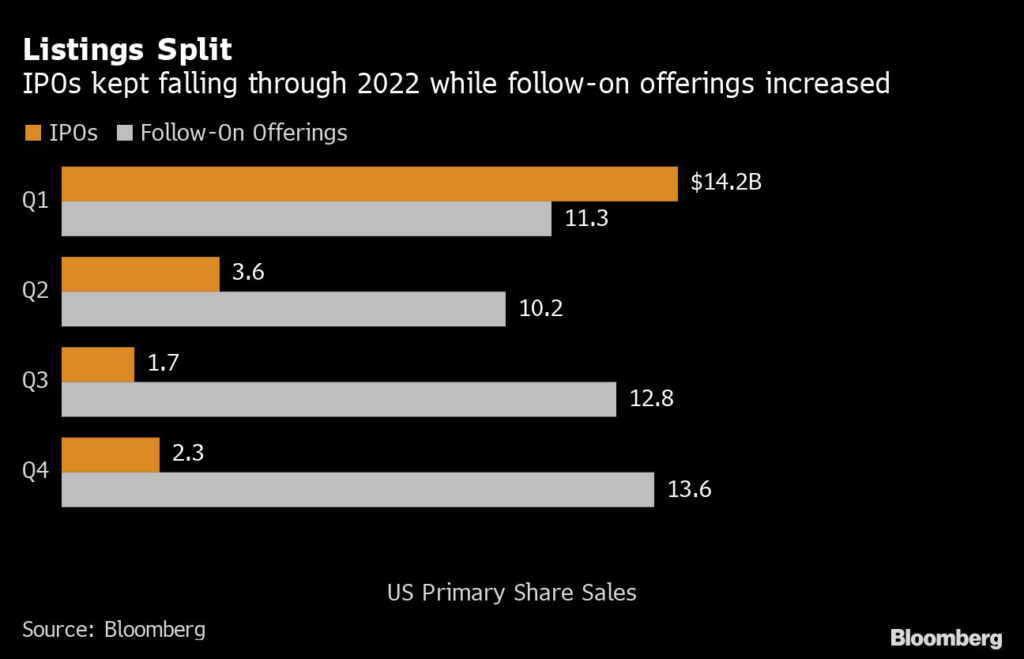Initial public offerings in the US nose-dived from an all-time high, and even a late pickup in follow-on offerings couldn’t erase their worst showing in almost three decades.
(Bloomberg) — Initial public offerings in the US nose-dived from an all-time high, and even a late pickup in follow-on offerings couldn’t erase their worst showing in almost three decades.
As 2022 fizzles to a close, 214 companies have priced IPOs to raise a combined $21.8 billion, not including secondary shares sold by investors in those listings, according to data compiled by Bloomberg. That compared with almost $335 billion in primary shares sold in 1,091 IPOs on US exchanges last year.
“The buy side is starved for new places to allocate dollars in general, because the IPO market and to a lesser extent the follow-on market’s been very tough,” Zach Dombrowski, head of consumer ECM at William Blair, said in an interview.
Gone were mega IPOs by growth-stage juggernauts like Rivian Automotive Inc., quashed by market volatility, poor returns and inflation, as well as the collateral damage of war and pandemic. Instead, small blank-check firms and research-phase biotech and pharmaceutical startups accounted for most of of the listings, shrinking the size of share sales to a third of last year’s $309 million average.
Follow-on offerings of primary shares by companies raising capital also declined overall but less precipitously, to $48 billion from $143 billion in 2021. That was still the lowest mark since $35 billion in 1995. Those offerings, about half as many as the previous year, were driven in part by companies moving quickly to capitalize on ephemeral market upticks.
The average size of follow-on offerings also slipped, to an average of $106 million from $156 million in 2021, the data show. That reflects smaller public companies needing cash in a tough year, while typically lacking both the reserves of larger corporations as well as access to the private capital that fuels pre-IPO startups.
Tellingly as 2023 nears, most of the capital raised in IPOs in 2022 was in the first quarter. In contrast, follow-on offerings held steady, hitting their highest mark in the fourth quarter.
The year’s dearth of IPOs bodes ill for follow-on offerings, though, as newly public companies are frequently among those tapping equities markets for additional capital. For example, auto retailer Carvana Co.’s $1.25 billion offering in April was the third biggest of 2021 and the company’s fifth follow-on since going public in 2017.
More stories like this are available on bloomberg.com
©2022 Bloomberg L.P.










